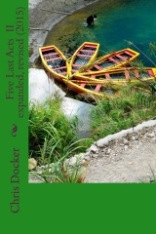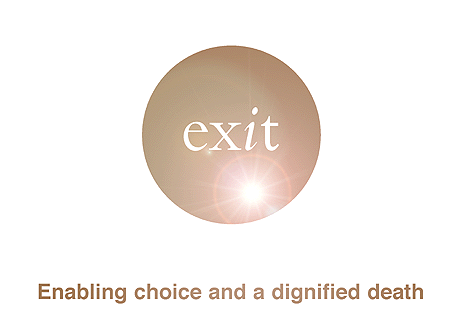
Sunset from the bridge, Ayr
Earlier this year on this Blog, we added the strapline, Taking away the fear of death. Fear of dying badly is one aspect, hence Exit’s original mission; fear of everything coming to an end is also an aspect. Knowing how to take matters into your own hands, should the need ever arise, tackles the first part. But what of the taboo of even thinking about death? Is it ‘bad’ for you? Is it easier to think of someone else’s death?
A recent headline in the Living section of a popular newspaper proclaimed, “Thinking about my death is the best cure for anxiety. Trust me, it works!” It has a worryingly similarity to that dubious adage, “Trust me, I’m a doctor!” (and these days we know we cannot usually “trust the doctor” if it is a case of rational suicide assistance). Thinking deeply about death can help us to face our fears; but what about the taboo of even doing that? Just saying to one’s family that you are making an advance directive (living will) can trigger responses such as, “You shouldn’t be thinking about death!”
The next most common response is to think about it vicariously. To think about someone else’s death, to hope it will be peaceful and so on. For those in favour of assisted suicide, it sometimes fuels donations to those organisations hoping to change the law. Making a donation feels like “doing something” – after which we feel free to, “think about something else.” Most rational people realise such a change is unlikely to occur in their own lifetimes (in the U.K., people have been trying, and believing it will happen “soon” since 1935). But what about helping people now? That’s where we come in.
Scots reading this forum will remember that wonderful, crusading, independent Member of Parliament, Margo MacDonald. Margo repeatedly campaigned for an assisted suicide law (and many other issues close to the heart of the people). When I spoke to Margo, she enthused about the reasons we need a change in the law to help people die; yet when I moved the subject to self-euthanasia, to people who want answers now, she suddenly became anxious and terminated the interview.
Helping a future generation is thinking vicariously. It avoids thinking too deeply about one’s own death, about how to manage it well, peacefully, and with minimum upset to one’s nearest and dearest. Oxytocin, the ‘feel-good’ hormone, increases generosity toward philanthropic social institutions, as opposed to immediate benefits directed at individuals or groups. (Exit has run on a shoe string since its inception, even though it is our research and literature that people turn to after supporting the wealthier ‘campaign’ institutions.) Somehow the thought of helping altruistically in a generalised way is more satisfying than actually doing something that can have a more direct effect now. It takes that taboo subject (whether starving children or difficulty in dying) one step further away from direct confrontation. Until the individual thinks about his or her own last moments on earth.
Anxiety and fear can be in response both to real concerns or imaginary ones. Excessive anxiety is related to an increased risk of cardiovascular morbidity and mortality, so facing and dealing with some of the fears can actually help you live a loger life! (This mirrors letters received from some Exit members, saying how knowledge of self-euthanasia methods has given them ‘the courage to live longer.’)
In dealing with fears, a common distinction is suppression (where we avoid thinking about it) versus reappraisal (where we deliberately revisit and reformulate the meaning of a situation). In studies, reappraisal is more effective than suppression. We do this in workshops but you can also try it by following the guidance in our Blog. If the question of death anxiety is left until we are almost dying, there is little chance to for reappraisal. The suppressed anxiety may even have taken years off our life as well as the quality of your life.
If this is all a bit ‘deep’ to think about now, have a break with some of the fun links below, inspiring quotes from famous people on the subject. You can bookmark this page and come back to it at any time. If you want to help our work (see the end of this article for more about what we do and our track record) you can use the donate button in the right hand column or follow this link.
What did they say about death, dying and living? Click and see…
ALBERT EINSTEIN ANAIS NIN BRUCE LEE DH LAWRENCE
EPICURUS FRANZ KAFKA GEORGE PATTON HEDY LAMARR
HUNTER THOMPSON JEAN COCTEAU JOHN LENNON
JACK KEVORKIAN LEWIS LAPHAM MARCUS AURELIUS
MARK TWAIN MAYA ANGELOU PAULO COELHO
PSALMS OF DAVID RIANE EISLER SOPHOCLES
STANISLAV GROF STEVE JOBS TS ELIOT
you can also use the left-right arrows (next page) to scroll
Footnotes:
“Trust me it works!” Pop star, Rita Ora, and Daisy Buchanan in The Telegraph
One cannot escape death (an ExitEuthanasia Blog on facing the fear)
Margo MacDonald and her assisted suicide bill (Evening News)
6 Positive Ways To Overcome Your Fear Of Death (Huffington Post)
Anxiety and the Fear of Dying (CalmClinic Website)
How to Overcome Fear of Death (WikiHow)
Death anxiety (psychology) (Wikipedia)
Oxytocin infusion increases charitable donations (Barraza et al, Hormones and Behaviour)
Neurocircuitry of Fear, Stress, and Anxiety Disorders (Shin & Liberzon, Neuropsychopharmacology)
Reappraisal and Suppression (Goldin et al, Biological Psychiatry)
The Choice to Face Your Choices (ExitEuthanasia Blog)
Exit: the Director’s Story (ExitEuthanasia Blog)
EXIT’S ACHIEVEMENTS (A history of our work)
- 1980 First “how-to” booklet in the world on self-euthanasia, with detailed methods and materials (How to Die With Dignity).
- 1993 First booklet in the world to be published with full peer review of its scientific data (Departing Drugs).
- 1994 Small book on different methods that included more academic analysis, for the first time in the world. A companion to Departing Drugs. (Beyond Final Exit).
- 2010 A more comprehensive book proposing five different methods for different circumstances and the first book of its kind in the world to detail the ‘compression method’ (Five Last Acts).
- 2015 The ‘big brother’ edition of Five Last Acts is updated and expanded to over 800 pages, and the first book in the world to give detailed instruction on the ‘nitrogen method’ (The Exit Path).






